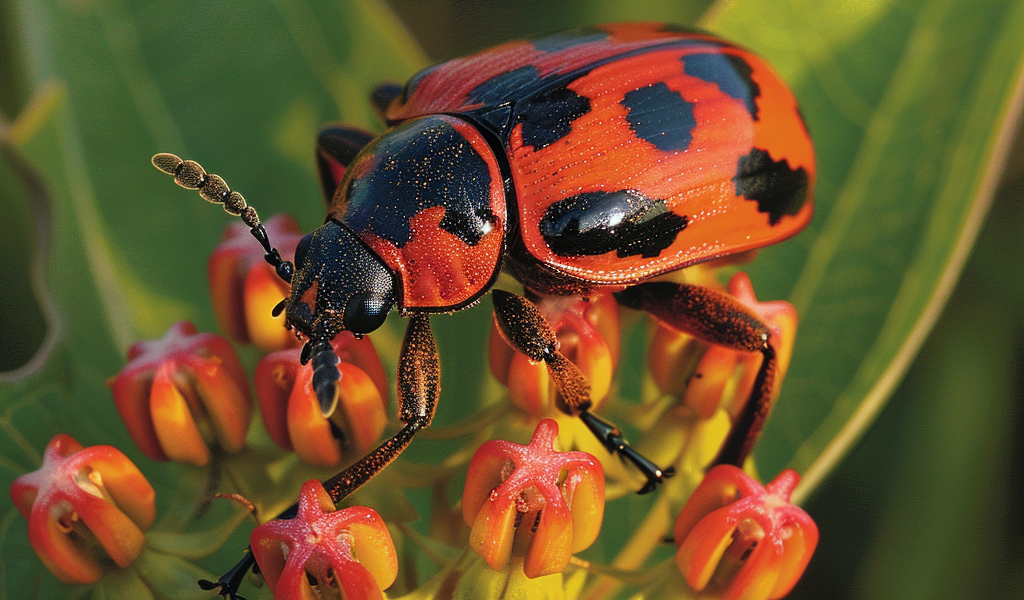Research into the red milkweed beetle, a fascinating insect known for its unique relationship with toxic milkweed plants, has recently yielded groundbreaking insights. This research, spearheaded by Rich Adams from the Arkansas Agricultural Experiment Station in collaboration with experts from the University of Memphis and the University of Wisconsin Oshkosh, explores how this beetle not only survives but thrives on a plant that is lethal to many other species.
The red milkweed beetle, scientifically known as Tetraopes tetrophthalmus, is a host-specialist that has been the subject of study for nearly 150 years. Recent advancements in genetic research have allowed scientists to sequence the beetle’s entire genome, paving the way for a deeper understanding of its biological traits, particularly in relation to its feeding habits on milkweed.
Through genome sequencing, researchers were able to draw comparisons between the red milkweed beetle and the Asian long-horned beetle, an invasive species that feeds on a variety of trees. This comparison is significant because it highlights the evolutionary adaptations that have occurred in the red milkweed beetle, enabling it to exploit a toxic food source.
“From a biological standpoint, there is a lot of correspondence that suggests that longstanding interactions between milkweed beetles and their toxic milkweed hosts should influence the biology of both interacting partners,” Adams explained. This statement underscores the importance of co-evolution in shaping the traits of both the beetle and the milkweed plant.
Milkweed plants are notorious for producing toxic compounds, particularly cardiac glycosides, which interfere with the essential balance of sodium, calcium, and potassium in the body—elements critical for proper heart function. Many insects that attempt to consume milkweed are adversely affected by these toxins, often leading to fatal consequences.
However, the red milkweed beetle has developed a remarkable adaptation. The research team discovered an expansion of genes from the ATP-binding cassette (ABC) transport family within the beetle’s genome. These genes are thought to play a crucial role in the beetle’s ability to sequester the toxins from the milkweed, allowing it to not only resist the harmful effects but also to store the toxins within its own tissues.
This unique adaptation may provide the beetle with a dual advantage: it can safely consume the toxic milkweed while simultaneously using the sequestered toxins as a defense mechanism against predators. This phenomenon showcases the intricate relationships that can develop between insects and plants, where one species evolves traits that allow it to utilize resources that are otherwise harmful.
The findings have broader implications for understanding ecological interactions and evolutionary biology. The co-evolution of milkweed plants and milkweed beetles serves as a compelling model for studying how species adapt to their environments and the evolutionary pressures that shape their interactions.
As researchers continue to delve into the genetic makeup of the red milkweed beetle, they anticipate uncovering even more insights into the complex dynamics of insect-plant relationships. These studies not only enhance our understanding of biodiversity but may also have potential economic impacts, particularly in agriculture and pest management.
In conclusion, the red milkweed beetle exemplifies the extraordinary adaptations that can arise from the interplay between species. By unraveling the genetic secrets of this beetle, scientists are gaining valuable knowledge about the evolutionary strategies that allow it to thrive on a toxic diet, shedding light on the delicate balance of life in ecosystems.





